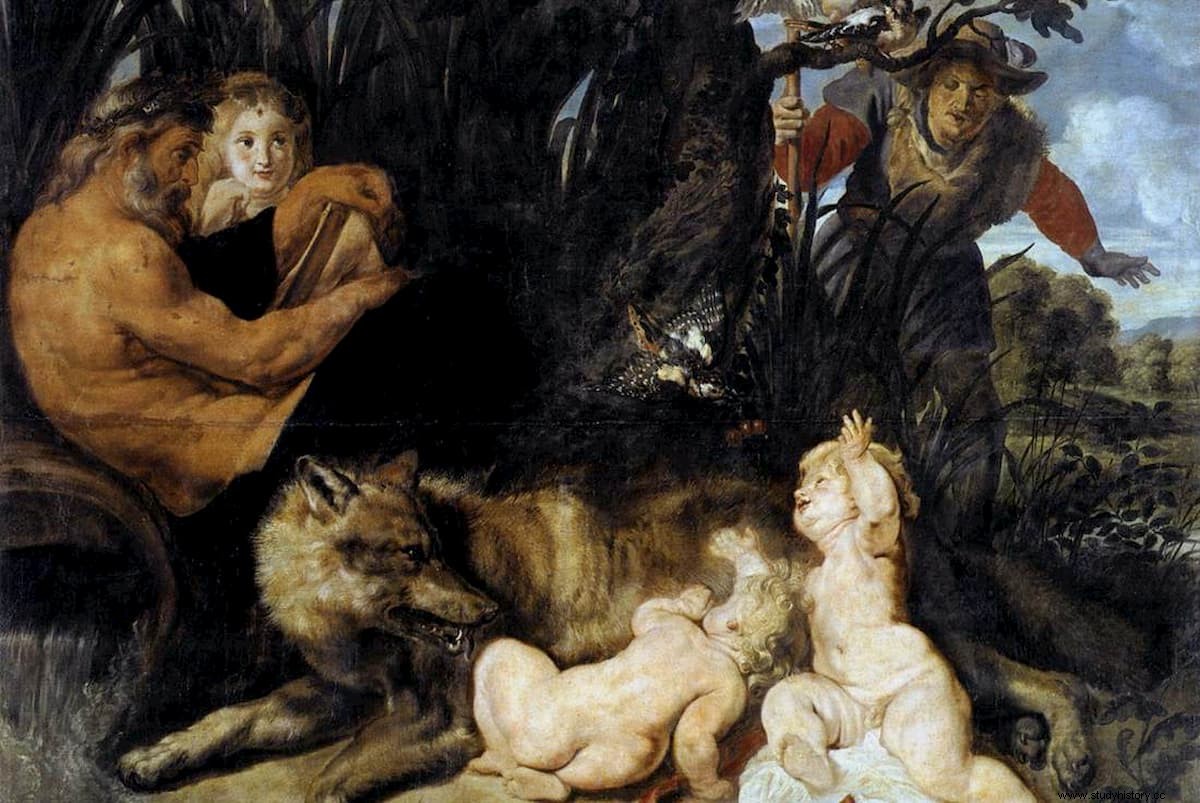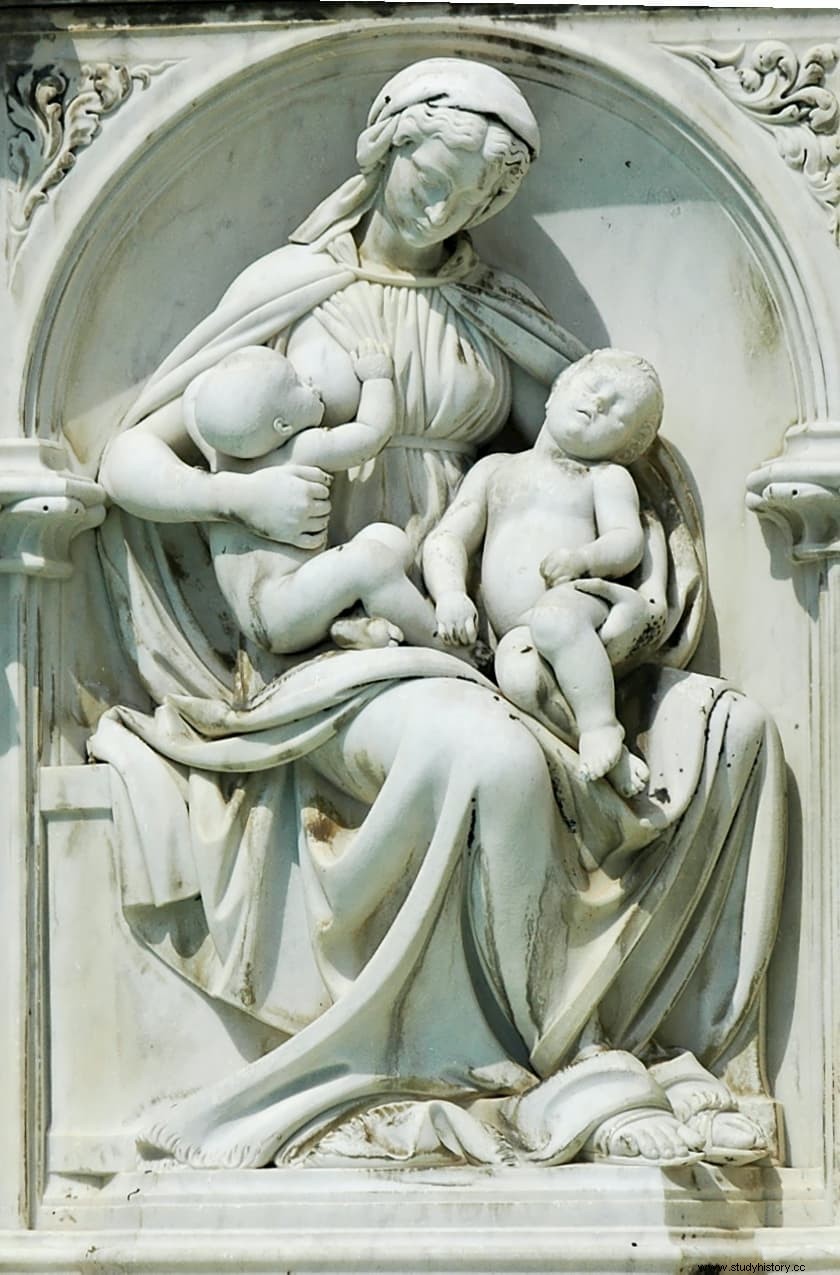Traditional Roman legend says that Romulus and Remus, the founders of the city of Rome, were raised by a she-wolf. After their birth, established by Marcus Terentius Varro on March 24, 771 BC, they were abandoned in the Tiber River, where the current carried them to the Velabrum swamp located between the Capitol and Palatine hills.
There he rescued them and fed the she-wolf, until they were found by a shepherd named Faustulus who took them to his house, where they were raised by his wife Aca Larentia (in Latin Acca).

There are those who have wanted to see in this Aca Larentia (or Larencia) the personification of the legendary she-wolf, arguing that the word lupa in Latin it refers to both the animal and the woman whose trade is love.
But the thing is, not much is known about her. Plutarch himself mixes her story with that of another Larencia mythological entangled with Heracles in one of those entanglements that the ancients liked so much.

Aca Larentia would have had no less than 12 children. One of them (and also Remus, as is known) died, and so Romulus took her place. From them derives the college of the Frates Arvales (brothers arvales), as Plinio tells, the priestly brotherhood composed of 12 flamines consecrated to the cult of Dea Dia , the archaic divinity protector of agriculture, who survived until its abolition around 400 AD

As we saw before Plutarch mentions the place where Aca Larentia was buried, the Velabrum (Velabro or Belauro). This is the valley that connected the Roman Forum with the Forum Boarium, and the Capitoline Hill with the western slope of the Palatine. It was originally a swampy area, whose connection to the story of Romulus and Remus lies in being the supposed final resting place of his adoptive mother, but also in another curious coincidence :that's where the basket in which the twins were traveling downriver stopped, thanks to the roots of the ficus ruminalis (wild fig tree) that was near the Lupercal grotto (where the she-wolf had suckled them).
There, in the Velabro, the Larentalia were celebrated on the last day of the Saturnalia (December 23). in honor of Aca Larentia. They took place in the place where, according to tradition, she was buried, near the Porta Romanula, and they honored the Lares (the Roman family gods). Offerings were addressed with the Flamen Quirinalis , who was the highest representative of Romulus, revered as the god Quirino.
Aulus Gellius mixes the legends of the two Larentias, relating them to Romulus, the she-wolf, and the Larentalia :

But did a woman named Aca Larentia really exist? It's hard to say. In Latin the term Acca has no meaning, but in Sanskrit akka means mother . Acca Larentia could refer to the mother of the lares or of the ancestors, identified as Romulus and Remus.
And the Sabines, the people who inhabited the hills near Rome and who ended up merging with the Romans, had a divinity called Larenta , related to the underworld and beyond.
One of the theories held by experts is that Aca Larentia would be a kind of Mother Goddess , a chthonic divinity, and these were frequently represented in the guise of she-wolves, just as the chthonic gods, such as the Can Cerberus, took the form of dogs. And yes, indeed, the two Larentias of the legends would be the same.
